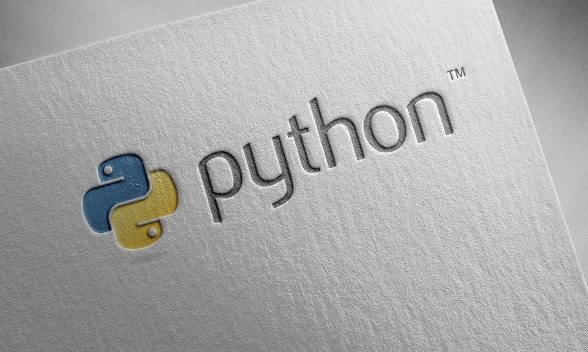Python `@classmethod` decorator explained
A class method is a method defined in Python through the @classmethod decorator. Its first parameter is the class itself (cls), which is used to access or modify the class state. It can be called through a class or instance, which affects the entire class rather than a specific instance; for example, in the Person class, the show_count() method counts the number of objects created; when defining a class method, you need to use the @classmethod decorator and name the first parameter cls, such as the change_var(new_value) method to modify class variables; the class method is different from the instance method (self parameter) and static method (no automatic parameters), and is suitable for factory methods, alternative constructors, and management of class variables. Common uses include creating objects from different initialization methods, unified management of subclass configurations, etc.

@classmethod is a very practical decorator in Python that defines class methods. Unlike ordinary instance methods, the first parameter of a class method is the class itself (usually written as cls ), not the instance ( self ). This means you can call it through a class or instance and you can operate on the class without creating an object.

What is a class method?
A class method is a method associated with a class, not a specific instance of a class. @classmethod is suitable when you want this method to access or modify the state of a class instead of a specific instance.

Let's give a simple example:
class Person:
count = 0
def __init__(self):
Person.count = 1
@classmethod
def show_count(cls):
print(f"Total people: {cls.count}") In this example, show_count is a class method. Whether you call it through the class name Person.show_count() or through an instance, it outputs how many Person objects are currently created.

How to define and use class methods?
Defining a class method is very simple. You just need to add an @classmethod decorator before the method and name the first parameter cls (this is a conventional way of writing).
class MyClass:
class_var = "Hello"
@classmethod
def change_var(cls, new_value):
cls.class_var = new_valueIt is also very flexible to use:
-
MyClass.change_var("World") - The instance can also call:
my_instance = MyClass(); my_instance.change_var("Hi")
Note: Although class methods can be called through an instance, it affects the state of the entire class, not the state unique to the instance.
Class method vs Static method vs Instance method
These three are easy to confuse. Let’s briefly distinguish their uses:
- Example method : The most common method, the first parameter is
self, used to process data at the object level. - Class method (
@classmethod) : The first parameter iscls, suitable for scenarios where class-level attributes need to be accessed or modified. - Static method (
@staticmethod) : There are noselforclsparameters passed in automatically, but it is more like "normal functions belonging to the class".
Give an example to illustrate the difference:
class User:
role = "member"
def instance_method(self):
print("This is an instance method")
@classmethod
def class_method(cls):
print(f"This is a class method from {cls.role}")
@staticmethod
def static_method():
print("This is a static method")-
instance_method()can only be called by instance. - Both
class_method()andstatic_method()can be called through classes or instances. -
static_method()does not depend on the state of a class or instance at all.
What are the common usage scenarios?
Factory Method
Class methods are very suitable for "factory methods", that is, to return different instances of the class.class Point: def __init__(self, x, y): self.x = x self.y = y @classmethod def from_polar(cls, r, theta): # Convert polar coordinates to Cartesian coordinates import math return cls(r * math.cos(theta), r * math.sin(theta))Modify class variables
If you have a set of subclasses inherited from the same parent class, and each subclass has its own configuration items, you can use class methods to manage these configurations uniformly.Alternative constructor
For example, you have multiple ways to initialize an object, and you can use multiple class methods to represent different construction logic.
Basically that's it. The key to understanding @classmethod is to figure out that it acts on classes rather than instances and can be inherited and overridden. If you use it more, you will find that it is more useful than it looks.
The above is the detailed content of Python `@classmethod` decorator explained. For more information, please follow other related articles on the PHP Chinese website!

Hot AI Tools

Undress AI Tool
Undress images for free

Undresser.AI Undress
AI-powered app for creating realistic nude photos

AI Clothes Remover
Online AI tool for removing clothes from photos.

Clothoff.io
AI clothes remover

Video Face Swap
Swap faces in any video effortlessly with our completely free AI face swap tool!

Hot Article

Hot Tools

Notepad++7.3.1
Easy-to-use and free code editor

SublimeText3 Chinese version
Chinese version, very easy to use

Zend Studio 13.0.1
Powerful PHP integrated development environment

Dreamweaver CS6
Visual web development tools

SublimeText3 Mac version
God-level code editing software (SublimeText3)

Hot Topics
 Can a Python class have multiple constructors?
Jul 15, 2025 am 02:54 AM
Can a Python class have multiple constructors?
Jul 15, 2025 am 02:54 AM
Yes,aPythonclasscanhavemultipleconstructorsthroughalternativetechniques.1.Usedefaultargumentsinthe__init__methodtoallowflexibleinitializationwithvaryingnumbersofparameters.2.Defineclassmethodsasalternativeconstructorsforclearerandscalableobjectcreati
 Python for loop range
Jul 14, 2025 am 02:47 AM
Python for loop range
Jul 14, 2025 am 02:47 AM
In Python, using a for loop with the range() function is a common way to control the number of loops. 1. Use when you know the number of loops or need to access elements by index; 2. Range(stop) from 0 to stop-1, range(start,stop) from start to stop-1, range(start,stop) adds step size; 3. Note that range does not contain the end value, and returns iterable objects instead of lists in Python 3; 4. You can convert to a list through list(range()), and use negative step size in reverse order.
 Accessing data from a web API in Python
Jul 16, 2025 am 04:52 AM
Accessing data from a web API in Python
Jul 16, 2025 am 04:52 AM
The key to using Python to call WebAPI to obtain data is to master the basic processes and common tools. 1. Using requests to initiate HTTP requests is the most direct way. Use the get method to obtain the response and use json() to parse the data; 2. For APIs that need authentication, you can add tokens or keys through headers; 3. You need to check the response status code, it is recommended to use response.raise_for_status() to automatically handle exceptions; 4. Facing the paging interface, you can request different pages in turn and add delays to avoid frequency limitations; 5. When processing the returned JSON data, you need to extract information according to the structure, and complex data can be converted to Data
 python one line if else
Jul 15, 2025 am 01:38 AM
python one line if else
Jul 15, 2025 am 01:38 AM
Python's onelineifelse is a ternary operator, written as xifconditionelsey, which is used to simplify simple conditional judgment. It can be used for variable assignment, such as status="adult"ifage>=18else"minor"; it can also be used to directly return results in functions, such as defget_status(age):return"adult"ifage>=18else"minor"; although nested use is supported, such as result="A"i
 How to read a JSON file in Python?
Jul 14, 2025 am 02:42 AM
How to read a JSON file in Python?
Jul 14, 2025 am 02:42 AM
Reading JSON files can be implemented in Python through the json module. The specific steps are: use the open() function to open the file, use json.load() to load the content, and the data will be returned in a dictionary or list form; if you process JSON strings, you should use json.loads(). Common problems include file path errors, incorrect JSON format, encoding problems and data type conversion differences. Pay attention to path accuracy, format legality, encoding settings, and mapping of boolean values and null.
 Python for loop to read file line by line
Jul 14, 2025 am 02:47 AM
Python for loop to read file line by line
Jul 14, 2025 am 02:47 AM
Using a for loop to read files line by line is an efficient way to process large files. 1. The basic usage is to open the file through withopen() and automatically manage the closing. Combined with forlineinfile to traverse each line. line.strip() can remove line breaks and spaces; 2. If you need to record the line number, you can use enumerate(file, start=1) to let the line number start from 1; 3. When processing non-ASCII files, you should specify encoding parameters such as utf-8 to avoid encoding errors. These methods are concise and practical, and are suitable for most text processing scenarios.
 python case-insensitive string compare if
Jul 14, 2025 am 02:53 AM
python case-insensitive string compare if
Jul 14, 2025 am 02:53 AM
The most direct way to make case-insensitive string comparisons in Python is to use .lower() or .upper() to compare. For example: str1.lower()==str2.lower() can determine whether it is equal; secondly, for multilingual text, it is recommended to use a more thorough casefold() method, such as "straß".casefold() will be converted to "strasse", while .lower() may retain specific characters; in addition, it should be avoided to use == comparison directly, unless the case is confirmed to be consistent, it is easy to cause logical errors; finally, when processing user input, database or matching
 Does Python have function overloading
Jul 14, 2025 am 02:35 AM
Does Python have function overloading
Jul 14, 2025 am 02:35 AM
No,Pythondoesnotsupportfunctionoverloadinginthetraditionalsense.1.Usingdefaultparametersallowssimulatingoverloadingbyprovidingoptionalargumentswithdefaultvalues.2.Utilizingargsand*kwargsoffersflexibilitytohandlevariablenumbersofargumentsbutrequiresin







